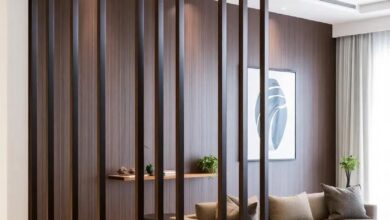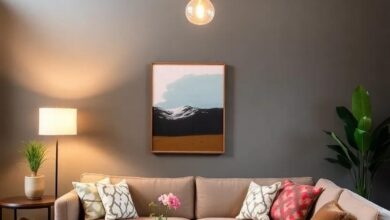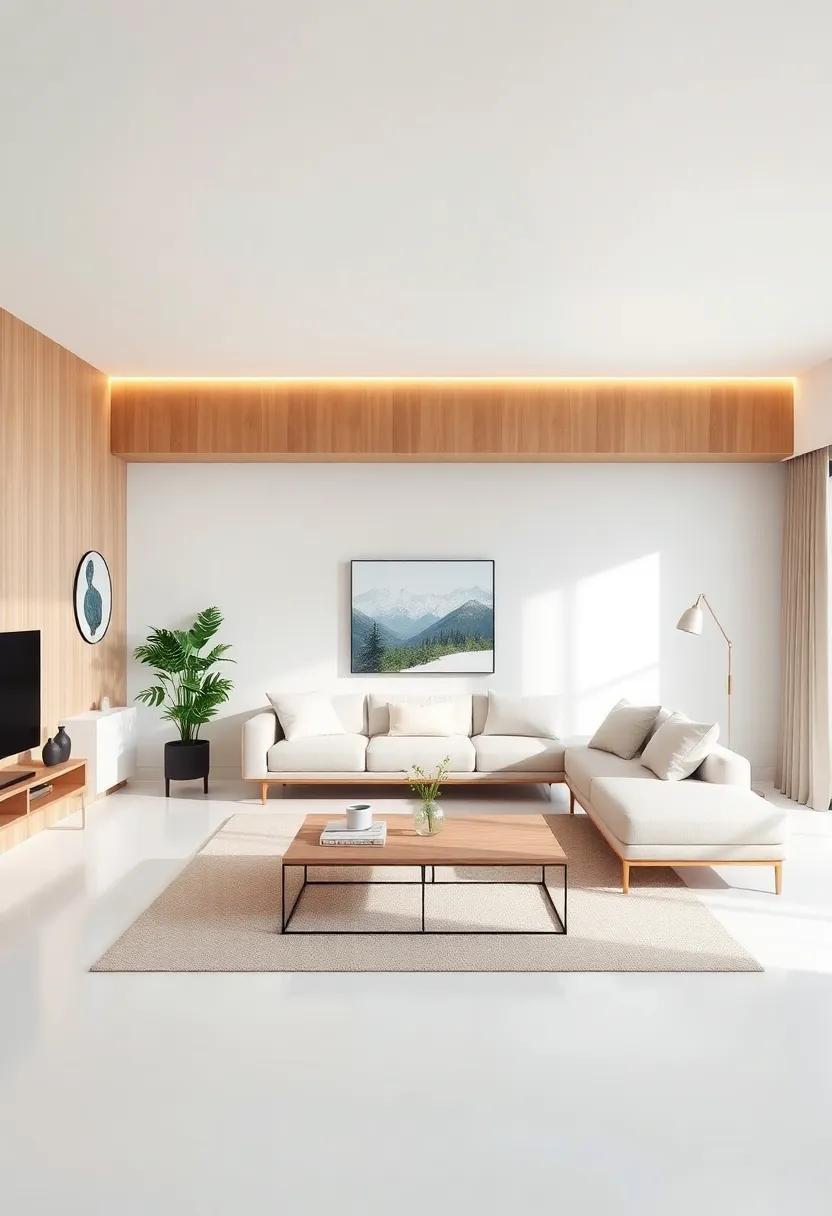
24 Functional Minimalist Design Ideas to Maximize Your Small Living Room Space
In today’s fast-paced world, clutter can feel like a weight on our minds and our homes. If you find yourself navigating the challenge of a small living room, you’re not alone. The minimalist design approach offers a refreshing solution, prioritizing functionality without sacrificing style. In this listicle, we’ve curated 24 innovative design ideas that will not only enhance the aesthetics of your limited space but also serve practical purposes. Prepare to discover creative ways to maximize every square foot, from smart furniture choices to strategic decor tips. Whether you’re a minimalist enthusiast or simply seeking a more organized living environment, this guide will inspire you to embrace simplicity and transform your small living room into a serene sanctuary where you can unwind and entertain with ease.
Embrace Multi-Functional Furniture: Invest in pieces that serve multiple purposes, like a sofa bed or an ottoman with storage

In a small living room, every square inch counts, making multi-functional furniture not just a convenience but a necessity. Imagine a stylish sofa bed that transforms into a comfortable sleeping space for guests.By day, it serves as a cozy spot for lounging with a book or enjoying a movie, while at night, it quickly converts into a restful bed. This sleek design not only maximizes space but also adds a modern flair to your minimalist aesthetic. Incorporating pieces like a manageable ottoman with storage can take it a step further. These versatile units can serve as footrests, extra seating, and hidden compartments to tuck away blankets, games, or magazines, keeping your living area tidy and functional.
Choosing the right pieces can also boost visual appeal. Look for furniture that complements a cohesive color palette, ensuring that each piece, while functional, is also aesthetically pleasing. A versatile coffee table that doubles as a workspace can be a game changer, especially if it features lift-top functionality for concealed storage.Moreover, consider a wraparound shelving unit that not only displays decor but can also act as a room divider, effectively segmenting your space while maintaining an open feel. These thoughtfully chosen designs serve as a testament to the idea that a small living room doesn’t have to sacrifice comfort or style for functionality.
utilize Vertical Space: Opt for wall-mounted shelves to keep the floor clear and display decor or books without taking up precious square footage
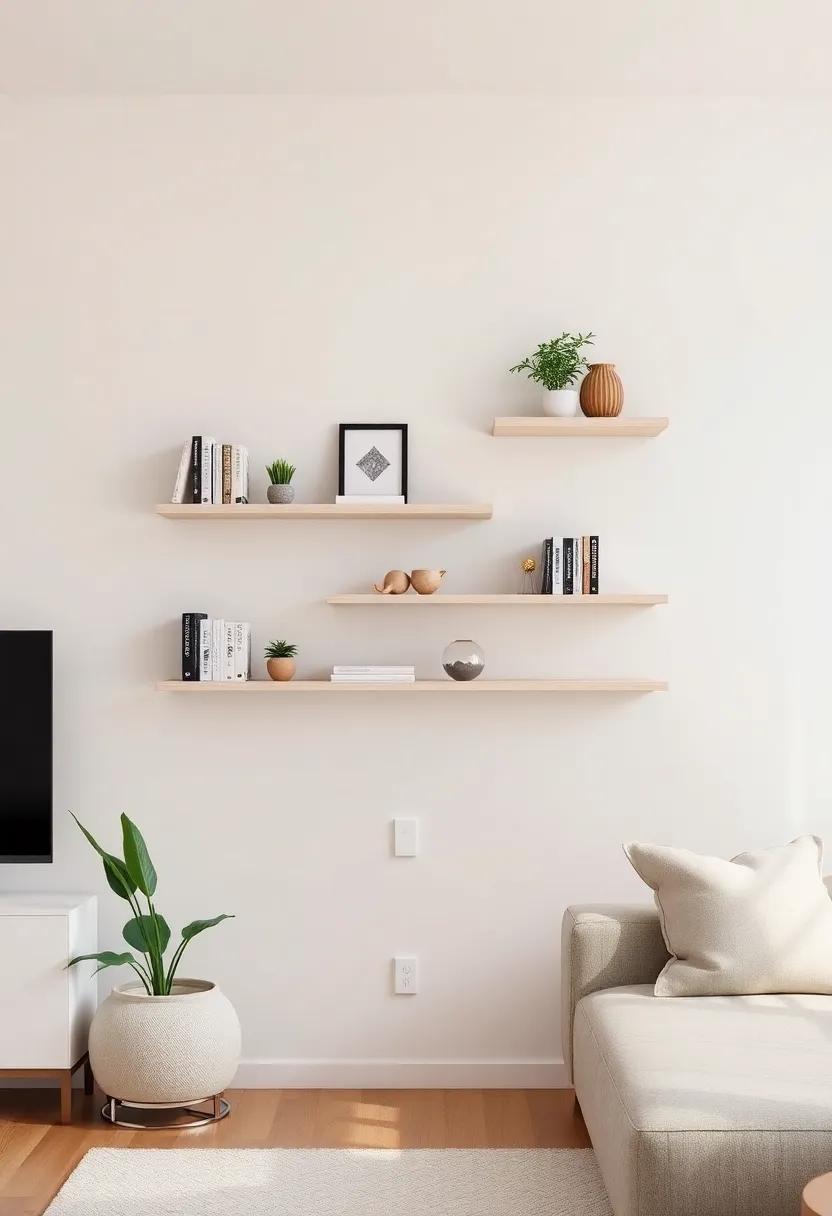
Transform your small living room into a chic haven by harnessing the power of vertical space.Wall-mounted shelves offer an excellent way to keep your floor clear, allowing for unhindered movement and an airy atmosphere.These shelves not only serve as functional storage solutions but also create a striking visual display, perfect for showcasing your favorite decor pieces or books. When selecting your shelves, keep in mind the following tips:
- Material Matters: Choose lightweight materials like wood or metal to ensure a seamless installation and easy adjustment.
- Design Harmony: Opt for shelves that complement your existing furniture and color palette for a cohesive look.
- Layering Accessories: vary the heights of decorative items to add interest while keeping the space uncluttered.
To further enhance the appeal and utility of your wall-mounted shelves, consider creating a dedicated display that tells a story or reflects your personality. This could be an inviting reading nook with neatly arranged books and a small plant or a dedicated space for cherished travel souvenirs. Adding a few small, wall-mounted units can also improve organization by categorizing items effectively. Take a look at this simple table to get some inspiration:
| Recommended Shelf Types | Ideal Items for Display |
|---|---|
| Floating Shelves | Books, small art pieces |
| Corner Shelves | Plants, decorative boxes |
| Glass Shelves | Picture frames, candles |
| Industrial-Style Shelves | Metal decor, vintage finds |
Choose a Neutral Color Palette: Light, neutral colors can create a sense of openness and make the space feel larger and more serene

When it comes to enhancing the ambiance of your small living room, a selection of light, neutral colors can work wonders. Shades like soft whites, beiges, and greys not only create a refreshing and airy environment but also reflect light, adding to the sense of space. Consider incorporating these hues through various elements within the room, such as:
- Wall Paint: A crisp white or a warm beige can act as a blank canvas, amplifying natural light.
- Furniture: Opt for sofas or chairs in light tones that don’t overpower the room.
- Textiles: Use cushions, throws, and rugs in soft neutrals to add warmth without cluttering the visual aesthetic.
For a more cohesive look, think about the finish and texture of your materials.Matte finishes can absorb light and promote a relaxing vibe, while subtle textures add depth without distraction.It’s essential to consider how different shades interact with one another and the natural light available in your space.By strategically placing items and using color theory, you can further enhance the open feel. Here’s a simple overview of how to incorporate a neutral palette effectively:
| Color Type | Effect |
|---|---|
| Soft white | Brightens space, enhances light |
| Warm Beige | Adds warmth, promotes coziness |
| Cool Gray | Creates a modern, elegant vibe |
Maximize Natural Light: Use sheer curtains or leave windows bare to invite more daylight into the room, enhancing the feeling of spaciousness
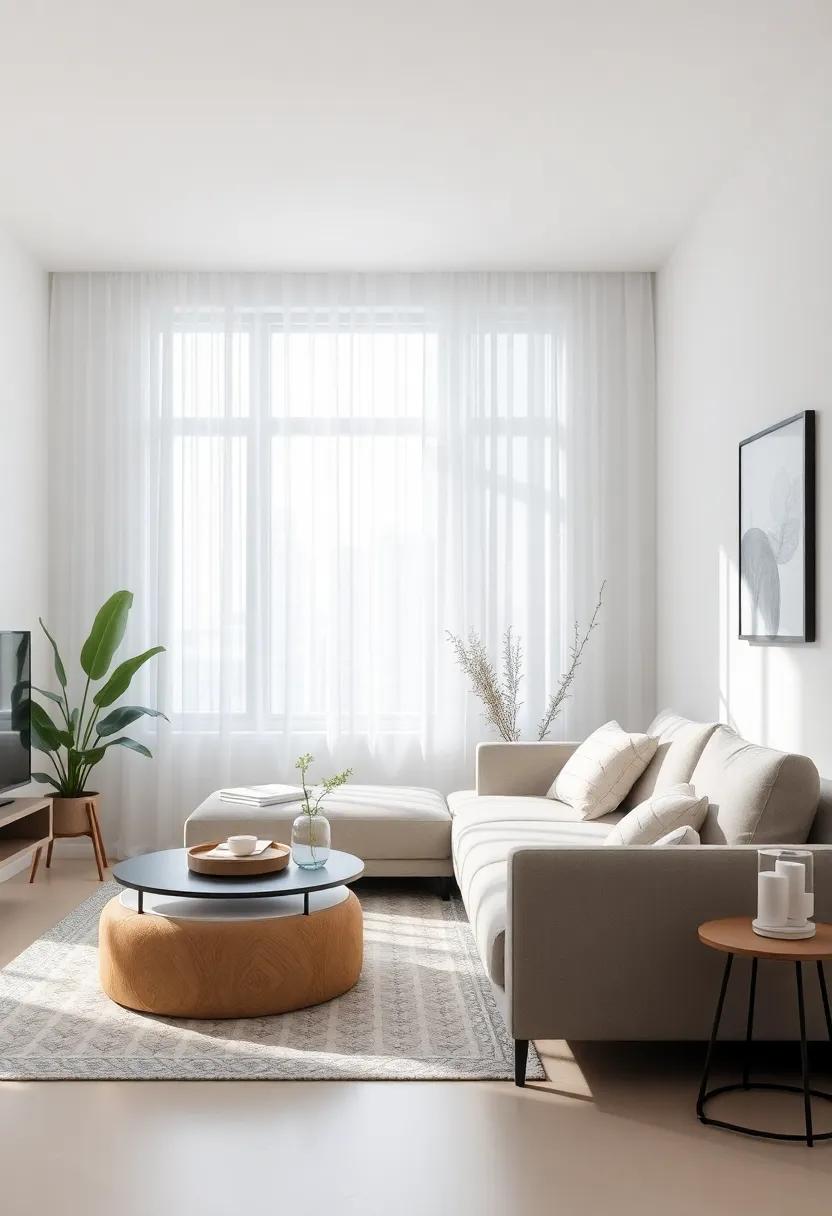
Embracing natural light is a cornerstone of maximizing small living spaces. Consider using sheer curtains that allow sunlight to filter through while providing a touch of softness. These delicate fabrics soften harsh sunlight, creating a warm, inviting ambiance that can make your living room feel larger and more airy. Alternatively, for a more modern approach, leave windows bare to fully saturate the room with daylight. This minimalist choice not only enhances openness but also offers an unimpeded view of the outdoors, bringing a sense of nature inside.
In addition to window treatments, the placement of mirrors can amplify the effects of natural light. A strategically placed mirror opposite a window reflects sunlight, doubling its impact and brightening dark corners. Consider these design tweaks to further enhance light flow:
- Clear furniture: Opt for glass or acrylic pieces that won’t block light.
- Color palette: Stick to light, neutral tones that reflect light rather than absorb it.
- Low-profile furnishings: Choose lower tables and couches to maintain unobstructed sightlines.
Opt for Slim Furniture: Select narrower sofas and chairs to avoid overcrowding while still ensuring ample seating for guests

When dealing with a limited living room space, incorporating slim furniture can drastically transform the feel of the room. Unlike bulkier options, narrower sofas and chairs can create an illusion of more space while still providing the comfort and seating you need for entertaining guests. Consider selecting sectionals with tapered arms,loveseats that fit snugly in corners,or slender accent chairs that can be easily moved around to accommodate varying numbers of guests. These choices not only keep your layout open and airy but also enhance the room’s overall aesthetic by adding sleek lines and modern flair.
To further maximize your area, think about incorporating furniture that serves a dual purpose. Look for ottomans with storage or nesting tables that can be tucked away when not in use. You can even opt for folding or stackable chairs to allow for easy setup when you have more visitors. This flexible approach will ensure that your space remains functional without feeling cramped, enabling you to maintain a welcoming atmosphere for all occasions. By choosing pieces that are both stylish and practical, you’ll enjoy a serene living room that radiates comfort and functionality.
Use Mirrors Strategically: Hang mirrors across from windows to reflect light and create an illusion of depth, visually expanding the room

Utilizing mirrors in your small living room can be a game changer for both aesthetics and functionality. By placing large mirrors directly across from windows, you can harness the natural light pouring in, effectively doubling its brightness and bringing vitality into your space. this clever design tactic not only illuminates dark corners but also enhances the feeling of openness, making your living area feel larger than it actually is. Consider various mirror styles to fit your minimalist theme, such as sleek frameless designs or simple geometric shapes that blend seamlessly with your decor.
When selecting the placement of your mirrors, think beyond merely reflecting windows. You might want to hang a mirror on walls opposite focal points like artwork or shelving, allowing it to reflect the visual interest and create a sense of depth.Incorporate mirrors in unexpected ways, such as using mirrored furniture or decorative accents, to add layers to your minimalist aesthetic without overcrowding the space. Certain clever mirror arrangements can even act as the centerpiece of a room, drawing the eye and creating a sense of cohesion among your design elements.
Incorporate Hidden Storage: Look for furniture that conceals clutter, such as coffee tables with drawers or benches that open up for additional storage
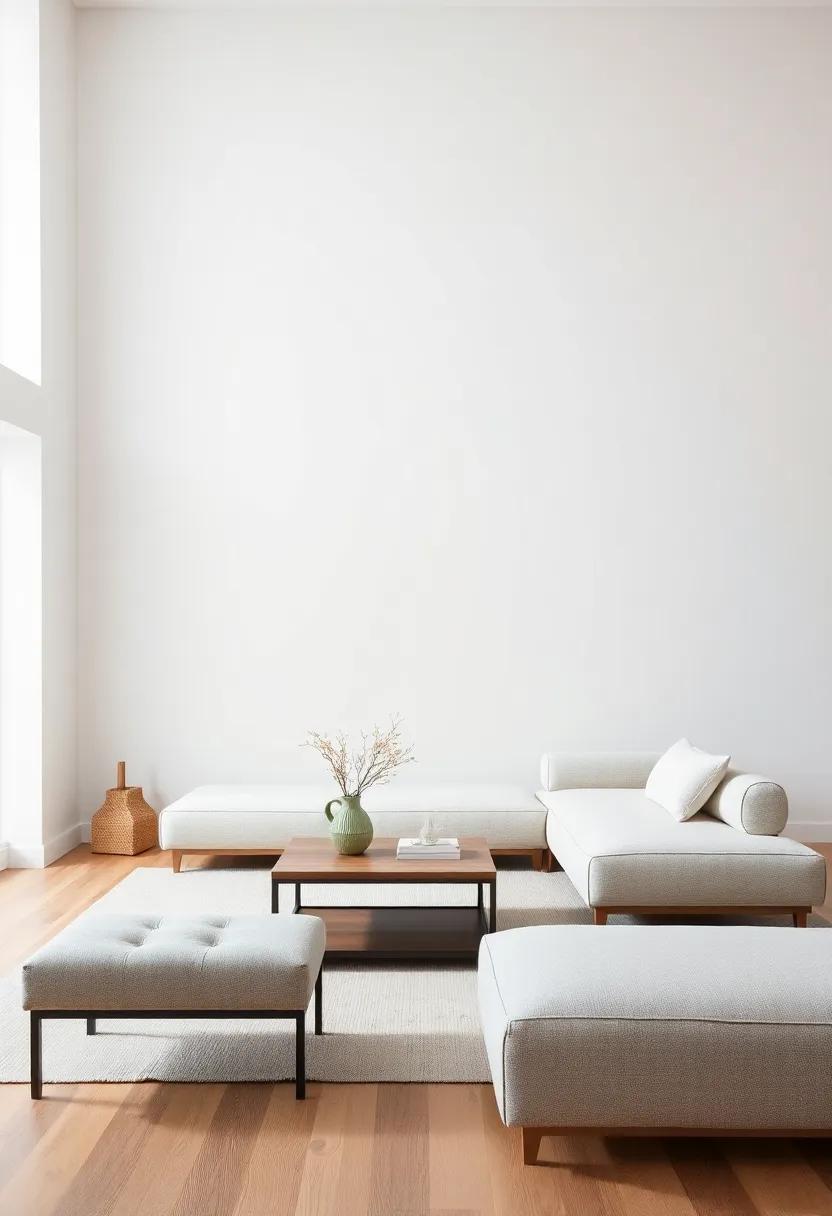
Maximizing a small living room calls for clever design choices, especially when it comes to hidden storage solutions that maintain a clutter-free atmosphere. Look for stylish furniture that doubles as a storage space without compromising on aesthetics. As an example, coffee tables with drawers provide not only a place to set your drinks and magazines but also a discreet area to tuck away remotes, coasters, and other miscellaneous items. Additionally,consider benches that not only serve as extra seating but can also open up,offering a convenient spot to stash blankets,pillows,or toys,keeping your living area neat and organized.
When choosing furniture with built-in storage, aim for pieces that blend seamlessly with your minimalist theme. Select designs that feature clean lines and neutral colors,ensuring that functionality does not overshadow style. Opt for multifunctional ottomans that can also serve as footrests or side tables while hiding away your belongings. Here’s a speedy overview of some effective hidden storage solutions that can complement your space:
| Furniture Type | Storage Capability | Design Tip |
|---|---|---|
| Coffee Table | drawers for remote controls and magazines | Choose one with a minimalist style in a light wood finish |
| Storage Ottoman | Hides blankets and occasional items | Select a fabric that matches your seating for cohesion |
| Benches | Ideal for stashing throw pillows | Look for ones that double as a decorative element,such as with tufting |
Keep Decor minimal: Limit decorative items to a select few that resonate with you,creating a serene look without visual chaos
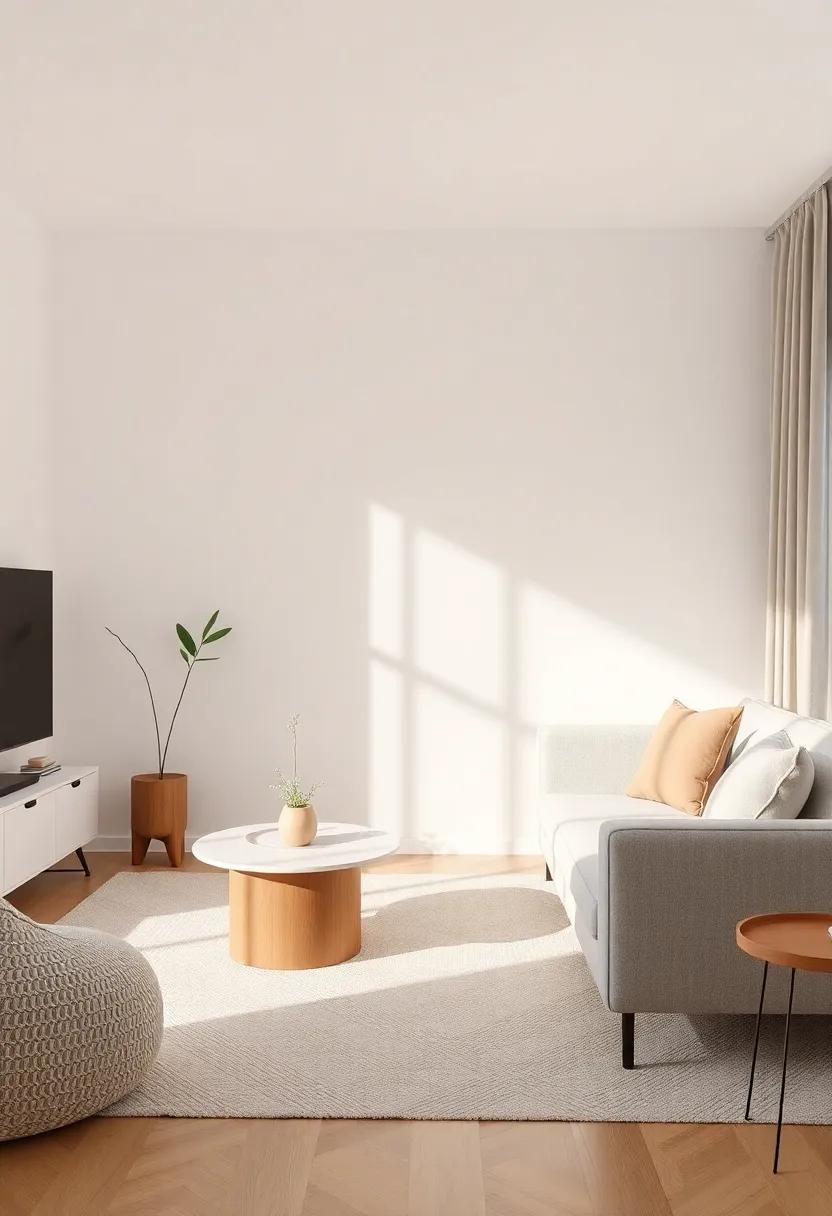
Embracing a minimalist aesthetic can transform your small living room into a peaceful retreat. By carefully curating the items you choose to display, you can create a harmonious space that eliminates visual clutter. Start by selecting a few meaningful pieces that truly resonate with you—these could range from a cherished family photo to a piece of art that inspires you. Consider displaying them in a way that highlights their importance, such as using floating shelves or a dedicated gallery wall. This approach not only adds character to your space but also allows each item to shine on its own.
To further enhance the calming vibe of your living room, aim to incorporate decorative elements that balance function and aesthetic appeal. Choose items such as a stylish plant, a beautifully crafted vase, or a unique sculpture that doubles as a conversation starter. By maintaining a refined selection, you foster a sense of serenity that invites relaxation. Here are a few ideas to consider:
- Statement plant: Opt for a single large potted plant that draws the eye.
- Sculptural objects: Choose one or two art pieces that add interest without overwhelming.
- Curated books: Display a few favorite books stacked with a small decorative object on top.
Select a Statement Piece: Choose one bold decorative element, like a unique artwork or a vibrant rug, to draw attention while maintaining simplicity
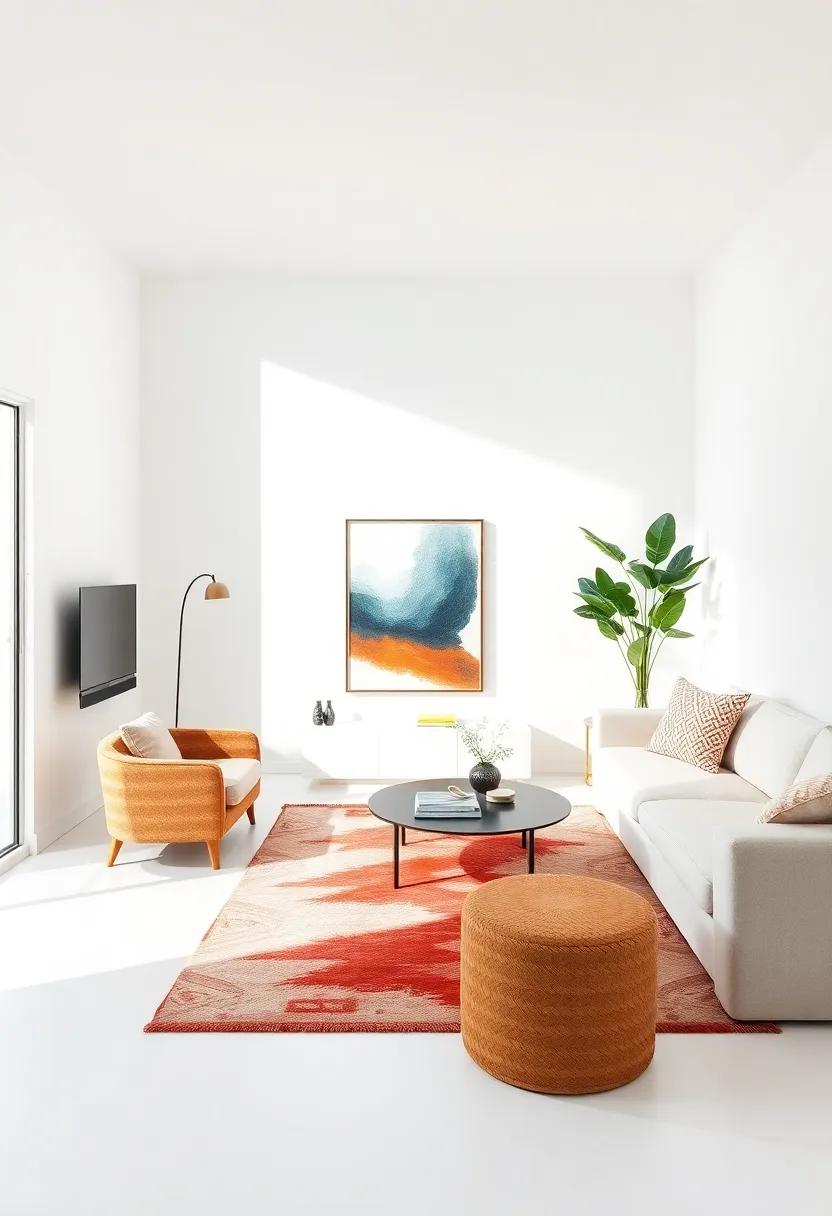
In a minimalist space, the key to creating visual interest lies in the selection of a single, striking decorative element. Think of a vibrant rug that not only adds warmth but also serves as an engaging focal point for your living area. Choose a design that features bold colors or unique patterns, allowing it to contrast beautifully against understated furniture and walls.This can define your sitting area and provide a cozy feel while maintaining the overall simplicity of your decor scheme.
Alternatively, consider showcasing a unique piece of artwork that encapsulates your personality and style. A large canvas print or an intriguing sculpture can draw the eye and serve as a conversation starter without cluttering the space. This singular decorative choice can effectively communicate your aesthetic values, all while adhering to a minimalist philosophy. Ensure that it resonates with the rest of your items, maintaining a cohesive tone throughout the room.
Create Zones: Define specific areas, such as a reading nook or work space, using rugs or furniture placement to create functional settings within the small room
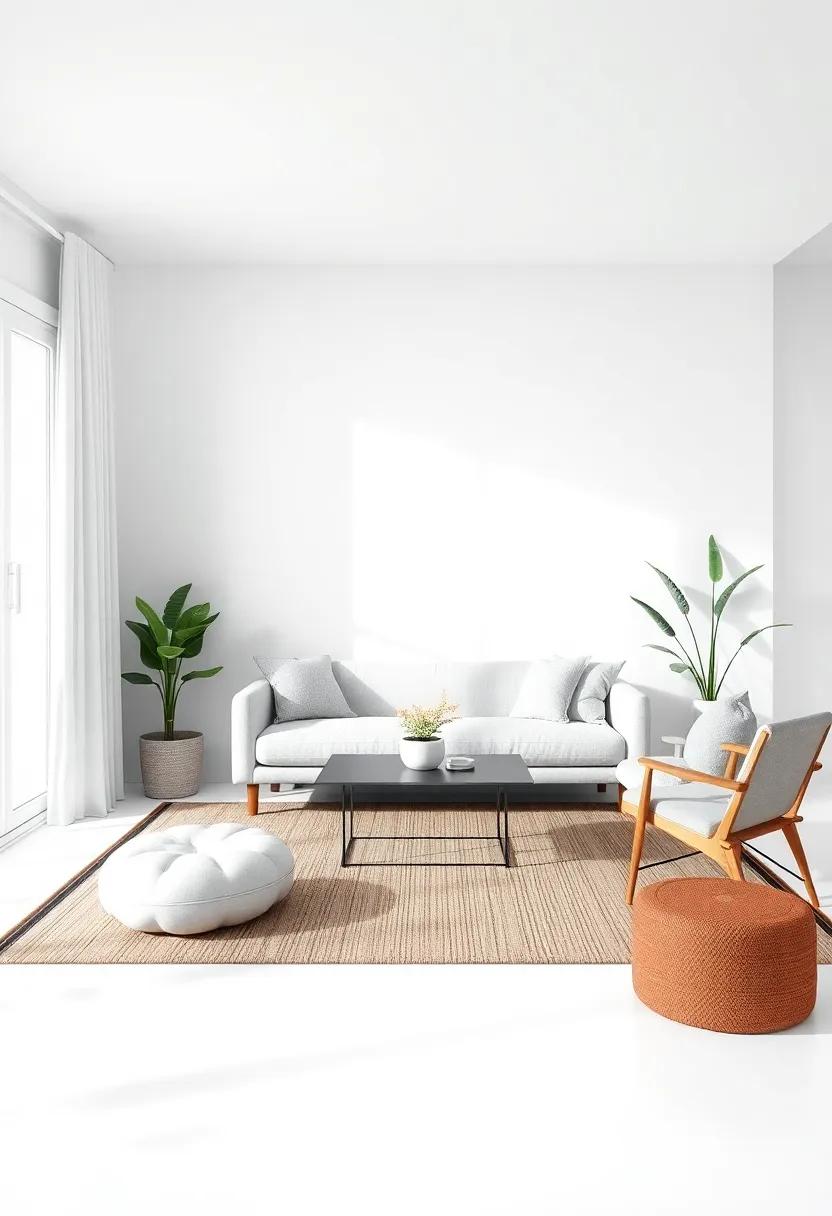
Creating distinct areas within a small living room can transform the space from ordinary to extraordinary. One effective way to achieve this is through the strategic use of rugs and furniture placement. As a notable example, consider placing a plush area rug under a cozy armchair and side table to delineate a reading nook. this not only adds warmth but also invites relaxation and creativity. On the other hand, a clean, minimalist desk set against a wall or in a corner can create an efficient work zone, promoting productivity while maintaining a neat aesthetic. Use furniture in lighter tones to enhance the feeling of openness and ensure that each zone feels cohesively integrated into the overarching design.
To emphasize functionality, think about the flow and accessibility between these zones. When arranging furniture, aim for a fluid layout that encourages movement and interaction. Mixing materials, such as a wooden table paired with soft textiles, helps to create visual interest and defines purposes clearly. Use multi-functional furniture, like ottomans with storage or foldable tables, to further maximize usability within the designated areas.Consider creating a visual guide for yourself with a simple table displaying styles and purposes:
| Zone | Purpose | Key Elements |
|---|---|---|
| Reading Nook | Relaxation and enjoyment | Chair, side table, soft rug |
| Work Space | Productivity and focus | Desk, comfortable chair, good lighting |
| Entertainment Area | Socializing and leisure | Compact sofa, coffee table, wall-mounted TV |
Use Folding furniture: Employ folding chairs or tables that can be easily tucked away when not in use, maximizing floor space for movement

Incorporating folding furniture into your small living room can transform the way you utilize your space. Folding chairs and tables offer versatility and functionality that larger pieces simply cannot. When entertaining guests or hosting family gatherings, you can easily set up extra seating by pulling out a few folding chairs from the closet. Onc the festivities end, these chairs can be folded and tucked away, leaving your floor clear for movement and daily activities. similarly, a folding table can provide a delightful dining setup or an impromptu space for hobbies and crafts, enhancing the adaptability of your living area.
Consider selecting pieces that blend seamlessly with your decor to keep the aesthetic unified and appealing. many modern folding chairs and tables come in stylish designs that complement minimalist themes.Look for options with sleek lines and neutral colors, or even ones with a pop of color that can serve as a fun accent when not in use. here’s a quick table summarizing some popular choices:
| Type of Furniture | Suggested style | Ideal Use |
|---|---|---|
| Folding chairs | Modern Wood or Metal | Extra Seating |
| Folding Tables | Compact Rectangular or Round | Dinner or Game Nights |
| Wall-Mounted Folding Desks | Minimalist Design | Work or Study area |
Integrate Built-In Solutions: Consider built-in shelving or seating to streamline the design and eliminate the need for bulky, standalone pieces
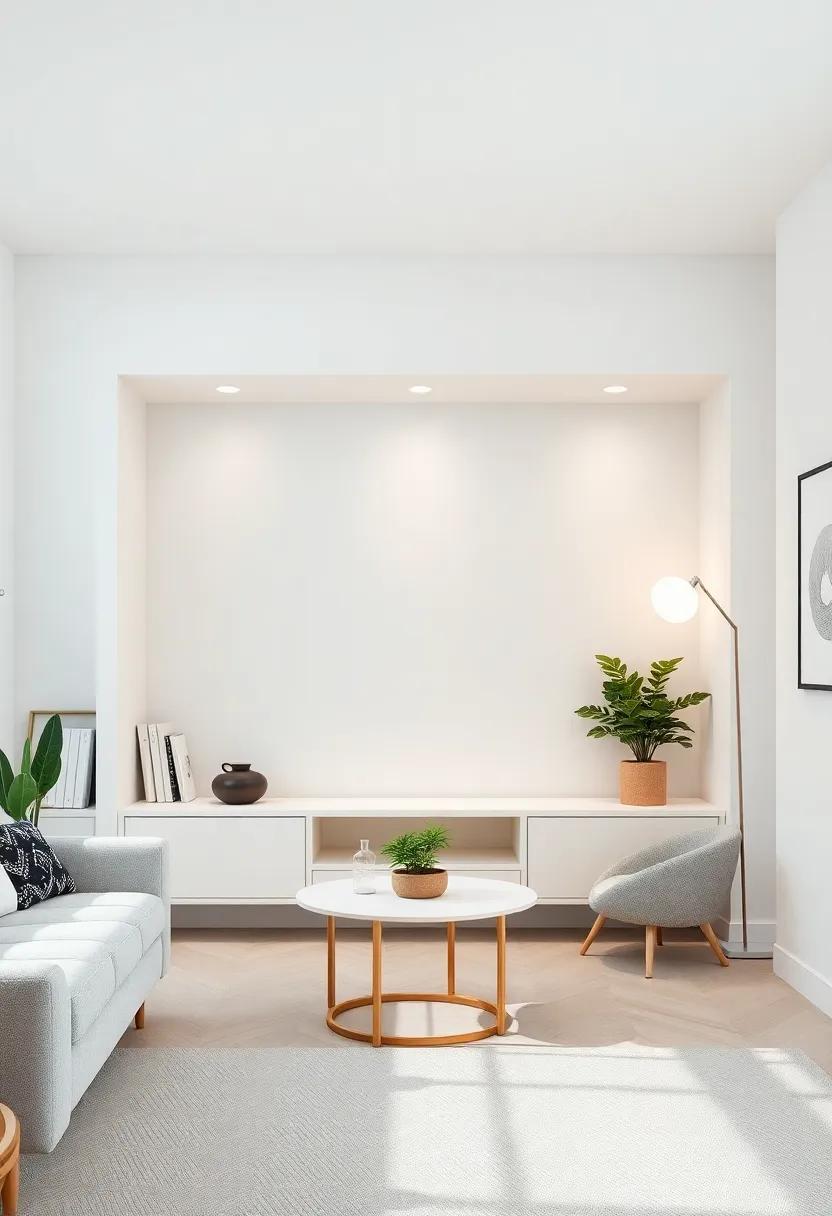
transforming your small living room into a functional oasis is all about embracing built-in solutions that blend seamlessly with your space. built-in shelving offers a streamlined choice to conventional bookcases,providing ample storage without overwhelming the room’s dimensions. Install shelves that reach from the floor to the ceiling for maximum storage and a visually appealing backdrop.consider incorporating lighting within the shelves to highlight your favorite decor items, creating focal points without sacrificing valuable floor space.
Built-in seating is another excellent strategy to enhance functionality while maintaining a minimalist aesthetic. Window seats or bench seating can be designed to fit snugly against walls, providing cozy spots for relaxation or socializing without requiring extra furniture. Pair these spaces with drawer storage underneath to keep blankets, books, or games neatly tucked away. The result is an inviting area where comfort meets practicality, ensuring that every inch of your small living room serves a purpose.
Choose light Fabrics: Light, airy textiles for upholstery and curtains help maintain an open atmosphere while adding comfort
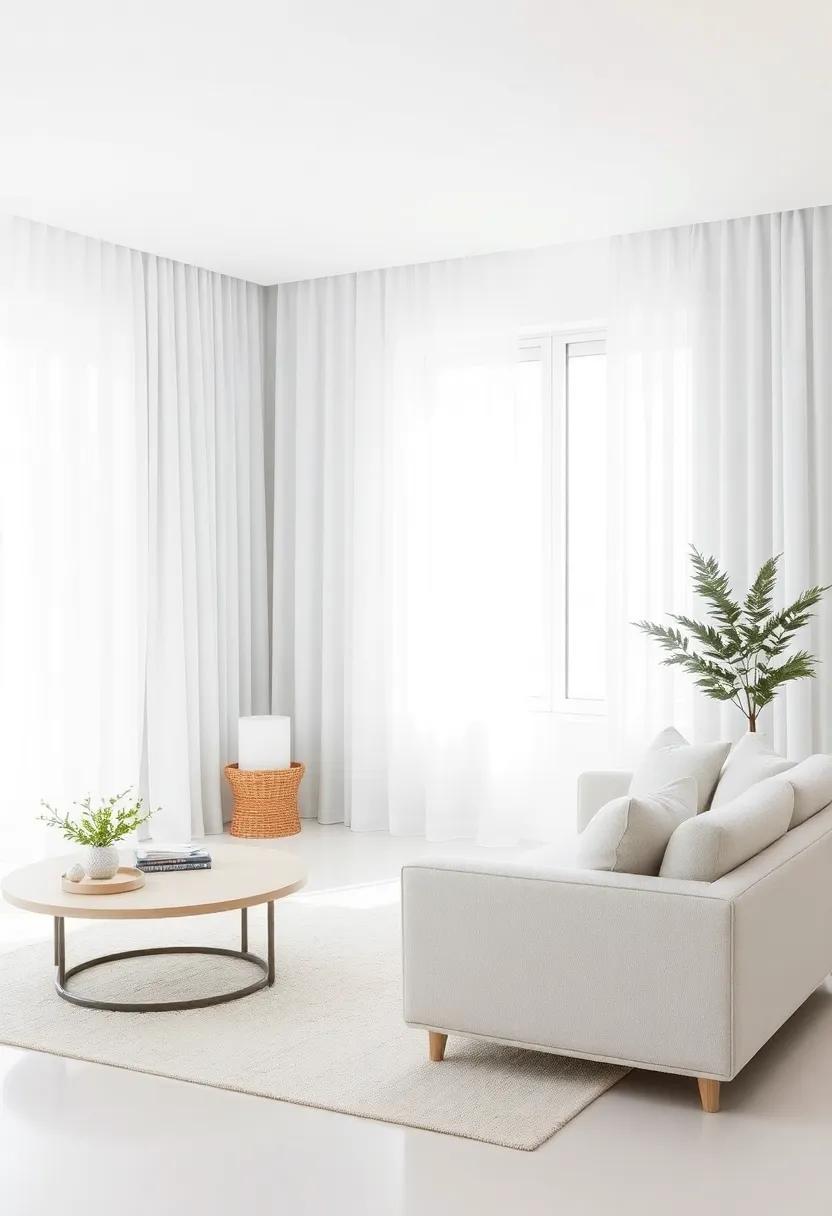
In a small living room, the choice of fabric can transform the entire space. Opt for light and airy textiles that allow natural light to filter through while adding a touch of comfort and elegance. fabrics like cotton,linen,or sheer polyester not only help create an open atmosphere but also enhance the minimalist vibe you’re aiming for. These materials drape gracefully, softening the look of furniture and windows, making the space feel larger and more inviting.
Consider incorporating a variety of light fabrics in your design. For example:
- Curtains: Choose sheer panels that flutter gently with the breeze to allow light and air to flow freely.
- Sofas and chairs: Slipcovers in soft linen or cotton can add a relaxed yet chic touch, perfect for minimalist aesthetics.
- pillows: Use textured cushions made from lightweight fabrics to add comfort without overwhelming the space.
To help visualize these choices, here’s a simple table to summarize the benefits of different light fabrics:
| Fabric Type | Benefits |
|---|---|
| Cotton | Breathable, durable, easy to clean |
| Linen | Luxury feel, natural texture, great drape |
| Sheer Polyester | Lightweight, versatile, available in numerous colors |
go for Glass Elements: Incorporate glass tables or accents to give an airy feel while visually reducing weight in the space

Incorporating glass elements into your small living room can create a sense of openness and lightness that is often elusive in compact spaces. Consider adding glass tables that allow light to flow freely, making your room feel larger and more expansive. These pieces not only serve a functional purpose but also act as visual focal points. A well-placed glass coffee table can reflect light and create an illusion of depth, drawing the eye across the room and enhancing the airy atmosphere.
Additionally, using glass accents such as decorative vases or pendant lighting can further elevate the minimalist aesthetic. Choose slender, delicate designs that contribute to the overall theme without overwhelming the space. Here are some ideas to integrate glass into your living room:
- Glass Shelves: Perfect for displaying decor while keeping the floor space open.
- Glass Inserts: Use glass in furniture pieces like cabinets to display collectibles while keeping a light feel.
- Pendant Lights: Opt for clear glass fixtures to diffuse light beautifully throughout the room.
Personalize with Art: Allow a few pieces of art or personal photographs to add charm without overwhelming the design with too many items
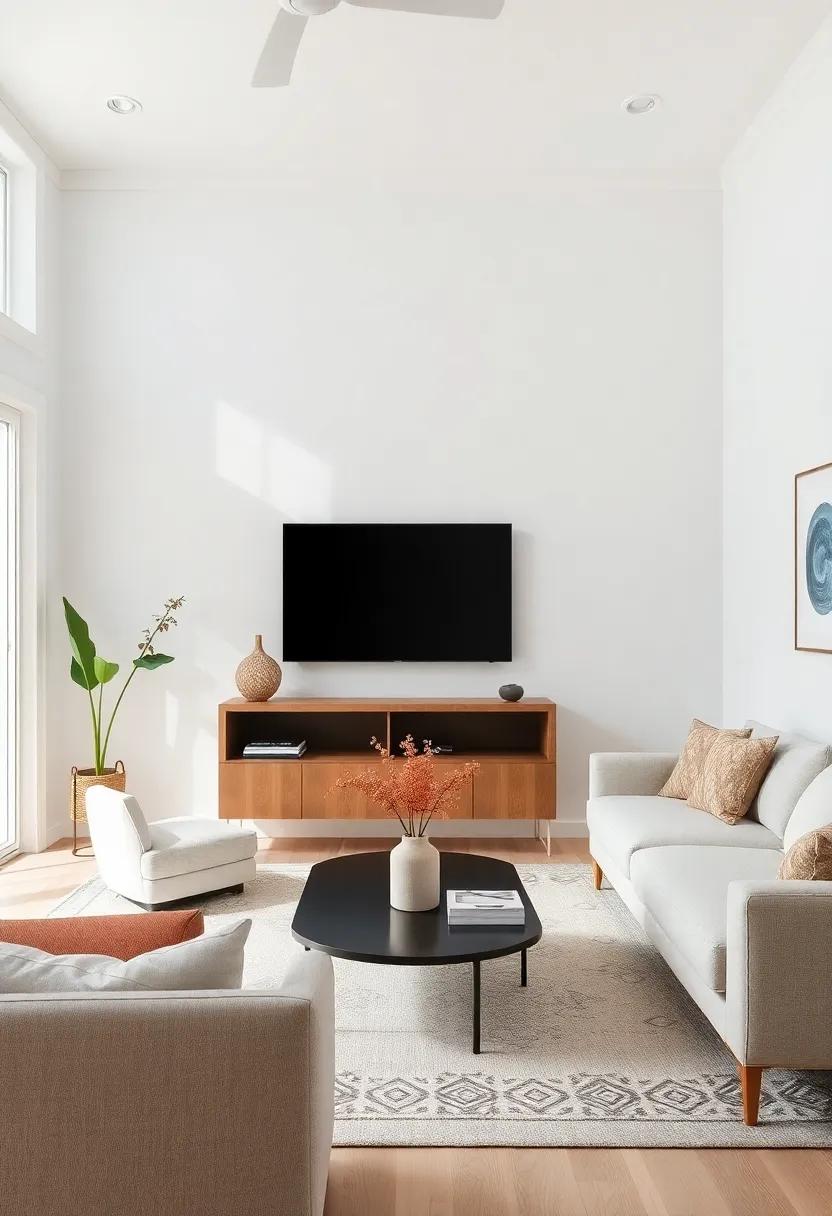
To inject personality into your minimalist space, select a few standout pieces of art or cherished photographs that speak to your individuality. Consider using a gallery wall approach, where you can group two or three complementary pieces together. This not only draws the eye but also creates a focal point without cluttering the overall aesthetic. Aim for a mix of textures and styles—for example, a sleek modern painting alongside a whimsical framed photograph can add depth and interest, allowing your personality to shine through subtly.
When choosing art, think about color schemes that align with your existing decor. A limited palette can ensure the pieces enhance rather than overpower the space. Use floating shelves to display framed artwork or photographs without taking up too much floor space. This method elevates the charm of your room while keeping the surfaces uncluttered. Additionally, consider the scale of your chosen pieces; larger artworks can make a bold statement, while smaller items can be layered for a more curated look. By focusing on a few key pieces, you’ll give your small living room character while maintaining a clean, minimalist design.
Keep Floors Clear: Use wall hooks for coats and bags to maintain a tidy entrance,saving precious floor space for living activities
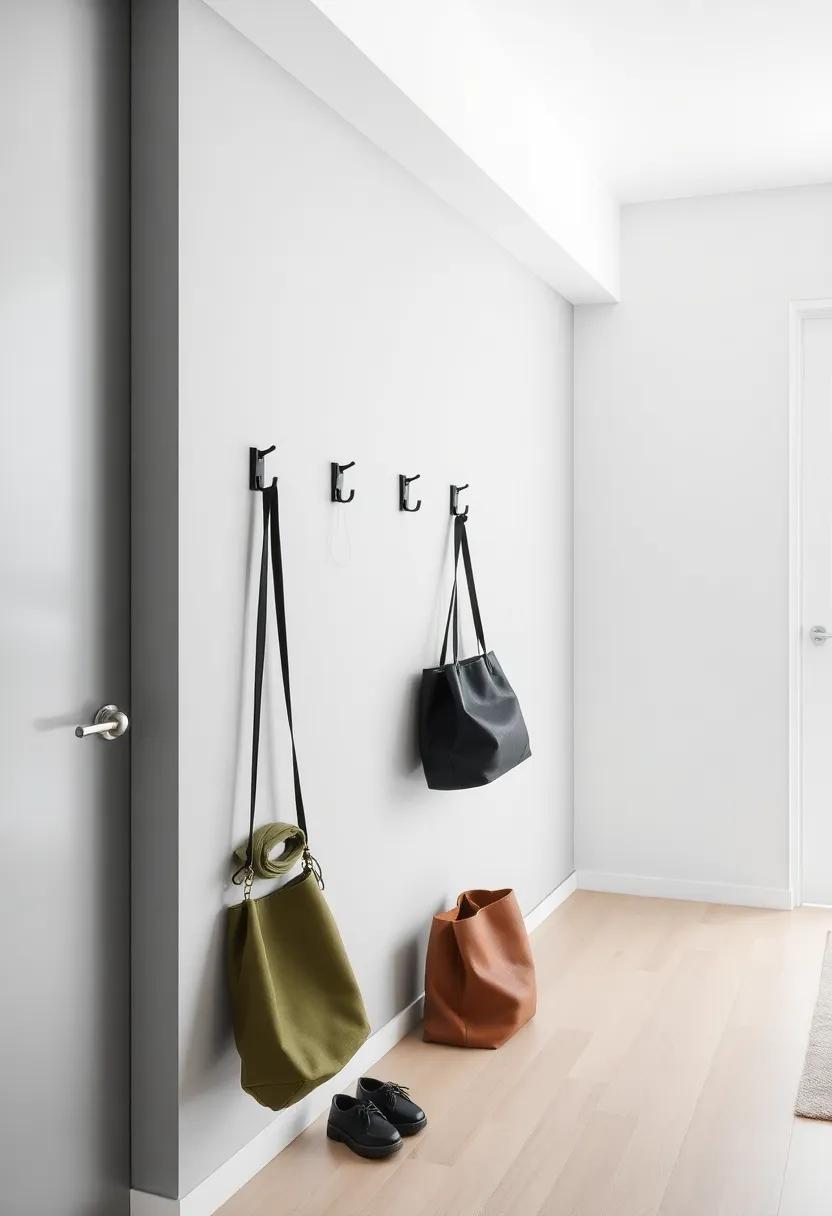
Transform your entrance into an organized oasis by installing functional wall hooks.These chic,minimalist hooks not only keep your coats and bags off the floor but also add a touch of style to your walls. Consider using a combination of sizes and designs to create an aesthetic that suits your space while serving different purposes. Here are some benefits of using wall hooks:
- Maximized Floor Space: By hanging items on the wall, you free up valuable floor space that can be used for walking or additional furniture.
- Easy Access: Wall hooks provide a designated spot for your everyday essentials, making it easy to grab what you need on your way out.
- Creative Arrangement: Mix and match various hook styles and colors to craft a unique entryway display that reflects your personality.
To enhance the functionality, consider installing a small shelf above the hooks. This shelf can be used for decorative items, keys, or even small plants, which will further declutter your living room. Choose materials that complement your interior design, whether they’re sleek metal, rustic wood, or colorful acrylic.Here’s a simple table to inspire your choices:
| Hook style | Material | Best Use |
|---|---|---|
| Minimalist Metal | Steel | Coats & Umbrellas |
| Wooden knob | Hardwood | Bags & Scarves |
| Colorful Acrylic | Acrylic | Hats & Accessories |
Stick with a Simple Layout: Arrange furniture in a straightforward manner that facilitates easy navigation and maximizes flow throughout the room
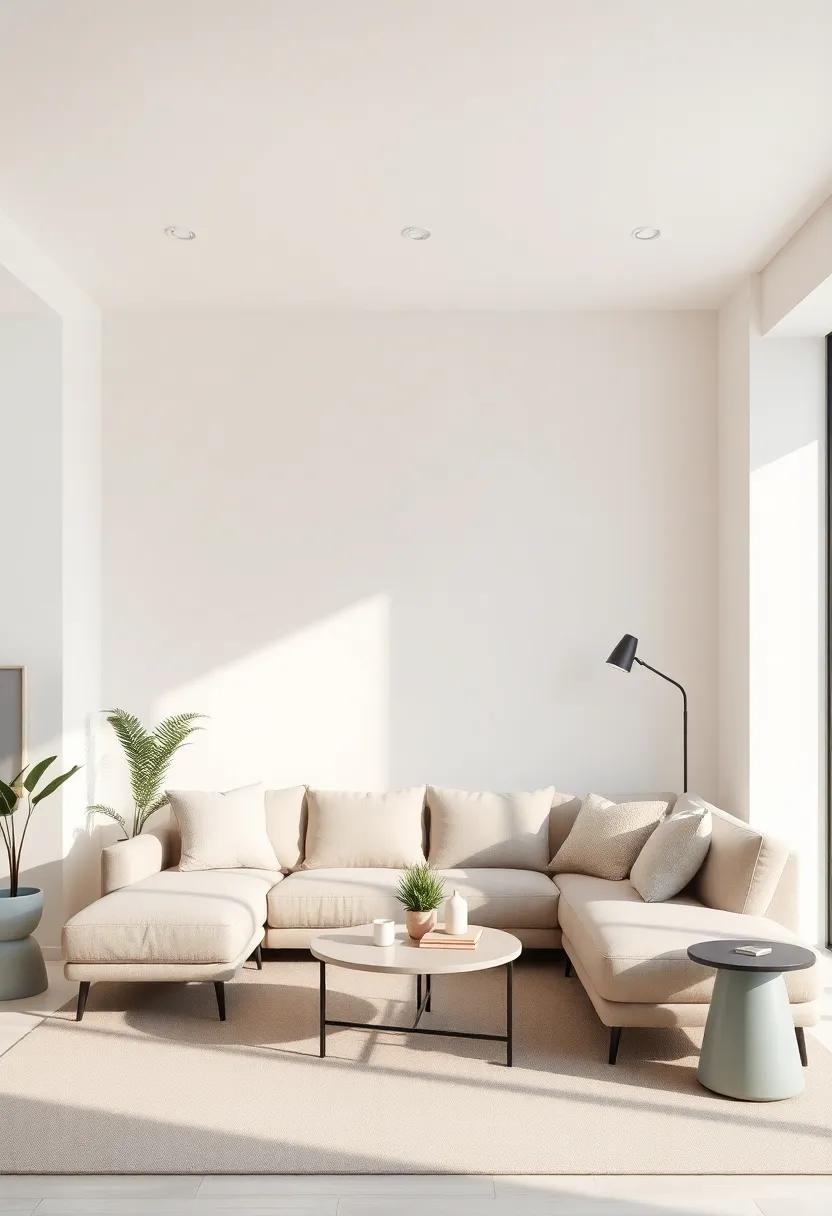
creating an inviting small living room begins with a furniture arrangement that promotes ease of movement. To enhance the flow throughout the space, consider the following simple strategies:
- Central Seating: Position a compact sofa or a couple of chairs in a way that forms a conversational zone.This encourages interaction while avoiding overcrowding.
- Multi-functional Pieces: Incorporate coffee tables that double as storage or ottomans that can be easily moved. This keeps the space versatile and organized.
- Diagonal Placement: Rather than aligning furniture right against the walls, try angling larger pieces slightly. This can create a dynamic layout that visually expands the room.
To ensure your small living room remains open and airy, prioritize navigation by keeping pathways clear. Use the following tips for an unobstructed flow:
- Defined Pathways: Make sure there’s at least 18 inches of walking space between furniture pieces to facilitate easy movement.
- Rug Placement: Utilize area rugs to delineate spaces while still allowing for seamless transitions, encouraging guests to flow from one area to another.
- Focal Points: Create a visual anchor, such as a piece of art or a feature wall, to draw the eye and navigate the space effectively.
| Furniture Piece | Functionality |
|---|---|
| Sectional Sofa | Seating & Space Definer |
| Storage Ottoman | Seating & Hidden Storage |
| Nesting tables | Flexible Surfaces |
Layer Lighting: Combine ambient, task, and accent lighting to create a warm atmosphere and enhance the functionality of the space

Lighting can transform a small living room into a cozy haven when done right. To achieve a harmonious atmosphere, think about the balance between different types of lighting. Start with ambient lighting—this serves as the foundation, providing even illumination throughout the space. Consider fixtures like soft overhead lights or dimmable LEDs that help create a serene environment. Next,integrate task lighting in areas where specific activities take place,such as reading or working. Think of floor lamps next to a chair or pendant lights over a coffee table, ensuring they’re positioned to reduce harsh shadows and maintain comfort.
To add more personality and highlight key features,incorporate accent lighting into your design. this type of lighting can enhance art pieces,architectural details,or plants,casting a warm and inviting glow. Use wall sconces or spotlights to draw attention to your favorite elements without overwhelming the room. Here are a few tips to blend these lighting types effectively:
- Layer the intensity: Combine all three layers at varying brightness levels to avoid monotony.
- Use warm-toned bulbs: For a softer, more inviting ambiance, choose bulbs with a color temperature between 2700K and 3000K.
- Consider smart lighting: Implementing smart bulbs allows you to adjust brightness and warmth according to time of day and mood.
Add Plants Sparingly: Introduce a few carefully chosen plants that bring life to the room while avoiding clutter from excessive greenery
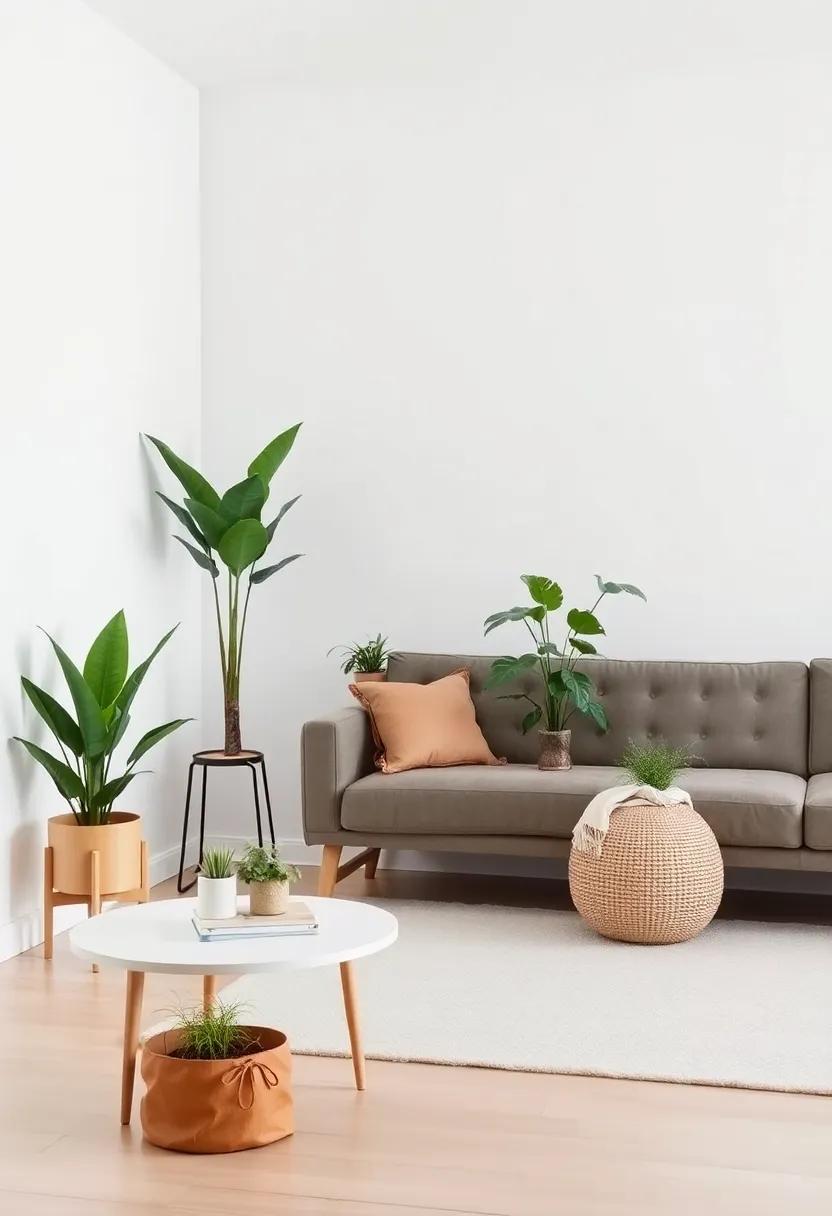
Incorporating greenery into your small living room can enliven the space and create a warm, inviting atmosphere. Tho, it’s crucial to select only a few plants that complement your minimalist decor without overwhelming it. Consider the following options to strike the perfect balance:
- Snake Plant: Known for its striking vertical leaves, the snake plant is easy to care for and thrives in low light, making it an ideal choice for compact spaces.
- pothos: With its trailing vines, pothos can be draped over shelves or placed in hanging pots to add a touch of elegance without taking up floor space.
- Succulents: Small and visually interesting, succulents come in various colors and textures, and can be grouped together for a chic display.
to keep your living room looking clean and purposeful, aim for a curated selection of plants that not only serve as decor pieces but also improve air quality. Consider placing them on a simple plant stand or a wall-mounted shelf to maintain a clutter-free floor. Here’s a quick guide to help you choose the right spots for your plants:
| Plant Type | Best Placement | Care Requirements |
|---|---|---|
| snake plant | Sunny corner or bedside | Low light, infrequent watering |
| Pothos | High shelves or hanging planters | Moderate light, regular watering |
| Succulents | Windowsill or tabletop | Bright light, minimal watering |
Choose an Area Rug Wisely: A well-placed area rug can define spaces and add warmth without making the room feel confined

Choosing the right area rug can transform your small living room by creating defined spaces without overwhelming the overall aesthetic. A well-placed rug not only adds warmth but also serves as a visual anchor that can tie together various design elements. consider the following tips when selecting your area rug:
- Size matters: Opt for a rug large enough to encompass key furniture pieces. Ideally, the front legs of your couch and chairs should rest on the rug to create a unified feel.
- Color Palette: Stick to a color that complements both your furnishings and the walls. Subtle tones can help the rug blend in, while bold colors can make a statement without being too overpowering.
- Texture Plays a Role: Incorporate different textures through your rug choice.A soft, plush rug can add a sense of comfort and warmth, while a natural fiber option can enhance a minimalist vibe.
- Shape and Pattern: Circular rugs can soften hard angles of a small room, while geometric patterns can add interest and depth without cluttering.
To further refine your choices, consider the functionality required from your rug. For high-traffic areas, durability is key, so materials like wool or synthetic fibers may serve you better. Additionally, a well-chosen rug can act as an artistic piece in your living room:
| Rug Type | Ideal Space | Benefits |
|---|---|---|
| Wool | Living Room | Durable & Warm |
| Synthetic | Entryway | Affordable & Easy to Clean |
| Jute | Outdoor/Indoor Transition | Natural & Eco-Kind |
| Shag | Cozy Reading Nook | Soft & Inviting |
Focus on Functionality: Arrange furnishings in a way that prioritizes how you use the space day-to-day, ensuring the layout suits your lifestyle
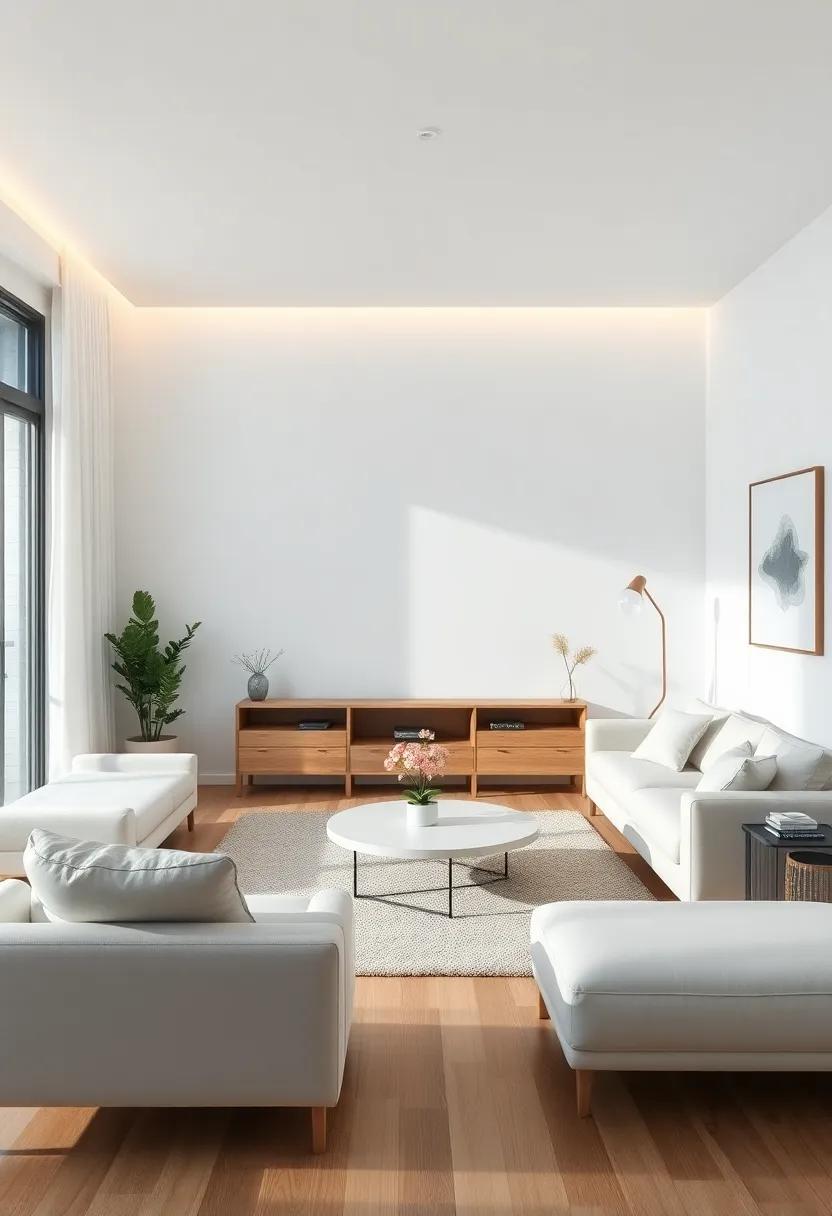
When arranging furnishings in a small living room, consider the daily activities you and your family engage in. Start by identifying the main purposes of the space—be it relaxing,entertaining,or working. Place your sofa to face the television or focal point, ensuring it promotes easy conversation. Use multi-functional furniture like a coffee table that doubles as storage or ottomans that can serve as both seating and a place to store extra blankets. Don’t forget to leave breathing room between pieces to create an open and inviting space.
Incorporate thoughtful layouts that reflect your routines.As an example, if you enjoy reading, position a cozy armchair next to a lamp, creating a designated nook for leisurely activities. If you entertain often, consider a small dining table that can be expanded when guests arrive. Utilize vertical space with shelves or wall-mounted units to keep floor space available for movement. Here’s a simple layout suggestion:
| Zone | Furnishing | Function |
|---|---|---|
| Relaxation | Sectional Sofa | Comfortable seating for TV watching |
| Reading | Armchair | Personal space for reading |
| Entertainment | Multi-functional Coffee Table | Central piece for snacks and games |
| Storage | Shelf Units | Organizes books and decor |
Use Color Blocking: Create zones or accent areas with colors to visually separate different functions in the room, enhancing both design and utility
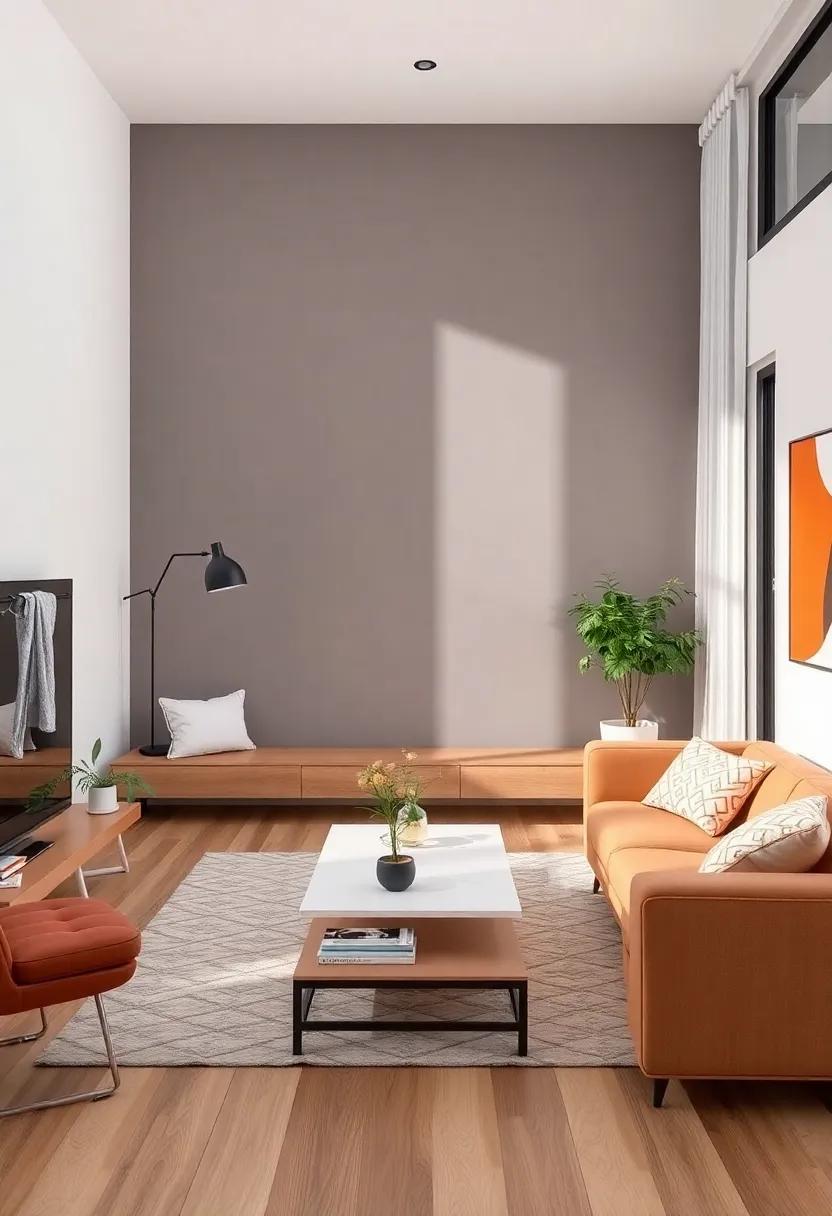
Color blocking offers a vibrant way to delineate spaces within a small living room while maintaining a minimalist approach. By using bold hues to create defined zones, you can separate different areas, such as a reading nook, entertainment zone, or workspace. As an example, consider painting your reading corner a tranquil blue, which invites serenity, while opting for a brighter yellow for your entertainment area to inject energy. This contrast not only enhances aesthetic appeal but also serves a practical purpose: it guides the eye and helps each space feel more distinct and functional.
When implementing this strategy, keep in mind the colors you choose should complement one another, creating a harmonious flow throughout the room. use accent rugs or furniture in corresponding colors to reinforce these zones, further promoting a cohesive look. Such as, pair a stylish green sofa with a vibrant orange chair to create an eye-catching seating arrangement, or delineate the workspace with a bold grey wall and matching desk accessories. This intentional use of color can visually expand the room while adding personality and style.
Opt for Slender Light Fixtures: Select sleek, minimalist lighting options that illuminate without occupying too much visual or physical space
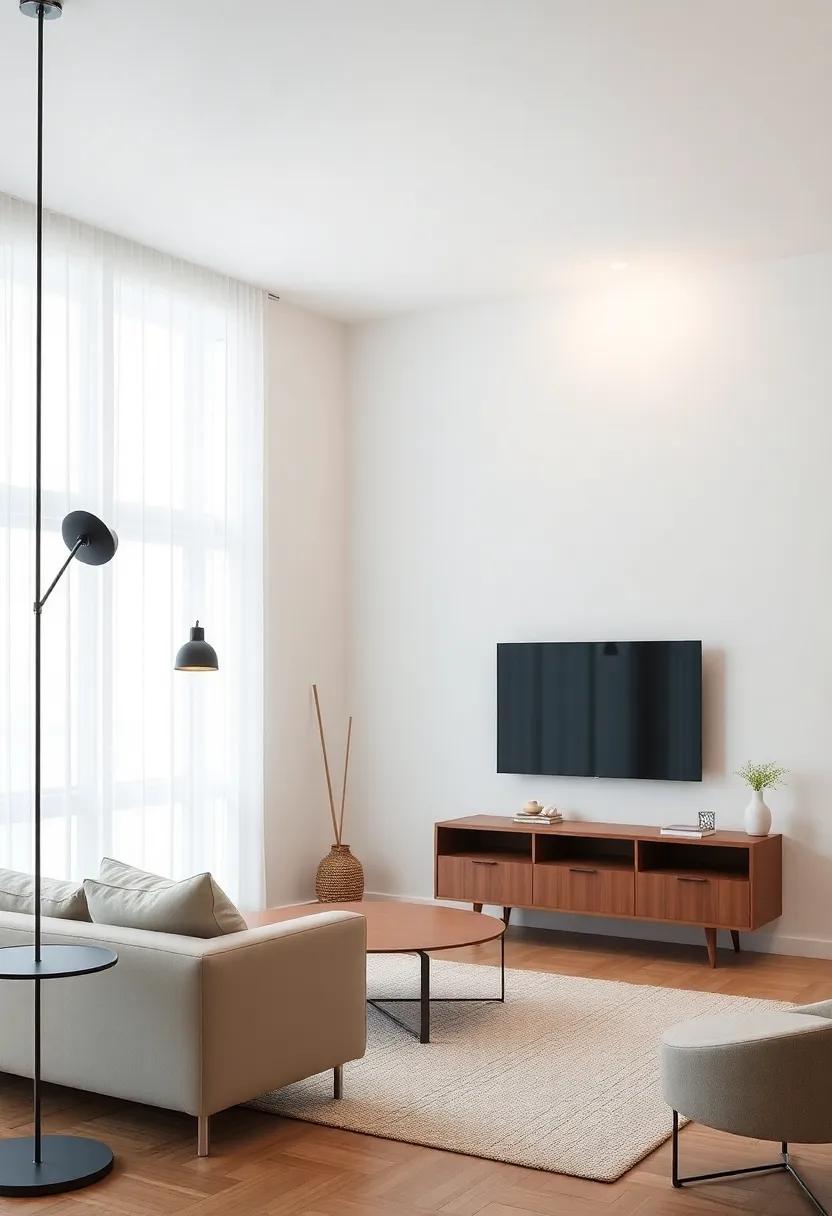
In a small living room, how you choose to illuminate your space can greatly influence both its functionality and aesthetic appeal. Opting for slender light fixtures is a smart move that allows you to enhance the ambiance without overwhelming the room. These sleek designs, ranging from floor lamps to pendant lights, occupy minimal visual and physical space while providing ample brightness. consider these options to elevate your lighting game:
- Pendant Lights: Hang slender pendants over seating areas to create a cozy focal point.
- Wall Sconces: Install wall-mounted lights to free up floor space and add interest at eye level.
- LED Strip Lighting: Use LED strips under shelves or along edges to provide soft illumination without clutter.
- Adjustable Floor Lamps: Choose lamps with articulated arms that can be positioned as needed,ensuring versatile lighting without bulk.
Consider incorporating a curated selection of slender fixtures that offer both form and function. The right combinations can enhance the layout of your living room while keeping it feeling airy. A practical approach is to use a mix of light sources that layer illumination effectively. Such as, blending ambient lighting with task lighting can create a warm atmosphere, allowing for various activities like reading or entertaining without cluttering the floor plan. Here’s a simple table of minimalist lighting ideas:
| Fixture Type | Key Feature | Benefits |
|---|---|---|
| Pendant Light | Sleek design | Focuses light on specific areas |
| Wall Sconce | Mounted vertically | Maximizes floor space |
| LED Strip | Flexible and discreet | Adds ambiance without bulk |
| Adjustable Floor Lamp | Articulated arm | versatile for different tasks |
Incorporate Custom Solutions: Consider tailored furniture or built-ins that cater specifically to your needs and style, maximizing both function and aesthetics
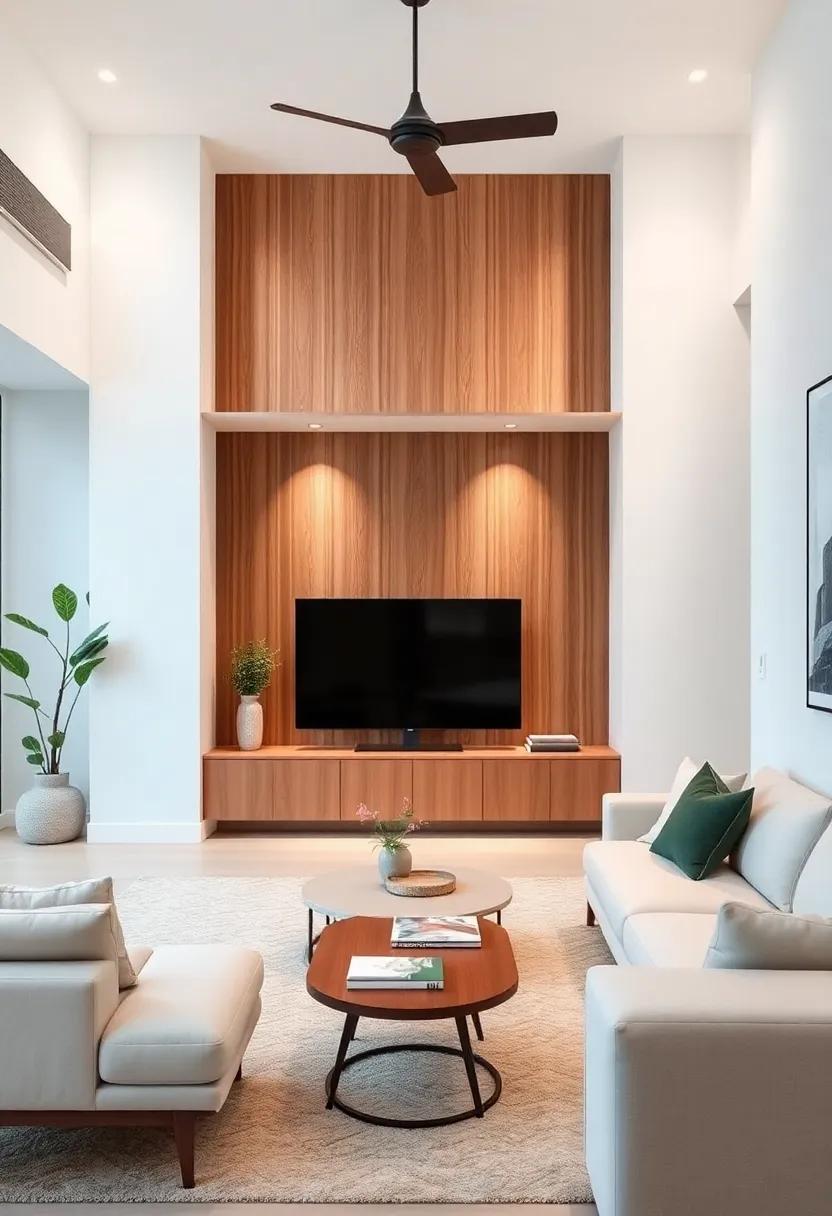
transform your small living room into a haven of functionality and style by incorporating custom solutions that reflect your unique tastes and meet your specific needs. Opt for tailored furniture that can be seamlessly integrated into your space. Consider multifunctional pieces, such as a sleek coffee table with hidden storage or a modular sofa that allows for versatility in your seating arrangement.Custom-built shelving units can also provide you with the perfect display for books and decorative items while maximizing wall space. By designing furniture that fits your lifestyle, you ensure that every element serves a purpose, making your living area both efficient and aesthetically pleasing.
Another clever approach involves investing in built-ins that cater to both your design aesthetic and functional requirements. These can be anything from floor-to-ceiling bookshelves to a cozy window seat with integrated storage.Using materials and colors that match your existing decor will create a cohesive look, making the room feel larger and more inviting. Enhance your investment by considering features like a fold-down desk or benches that can double as storage. Not only do built-ins maximize your space, but they also add character and charm, transforming your living room into a personalized retreat.
Key Takeaways
As we wrap up our exploration of these 24 functional minimalist design ideas, it’s clear that maximizing a small living room space doesn’t have to sacrifice style or comfort. By embracing simplicity and innovation,you can transform even the coziest corner into a serene retreat that reflects your personality. Remember, each choice you make counts—whether it’s selecting multifunctional furniture, utilizing vertical space, or incorporating calming colors.
The beauty of minimalist design lies in its ability to create a sense of openness and tranquility, allowing you to curate a space that feels both inviting and spacious. So, go ahead and experiment with these tips; your small living room is a canvas, and with a touch of creativity, it can become a masterpiece of functionality and design.Happy decorating!
As an Amazon Associate I earn from qualifying purchases.
